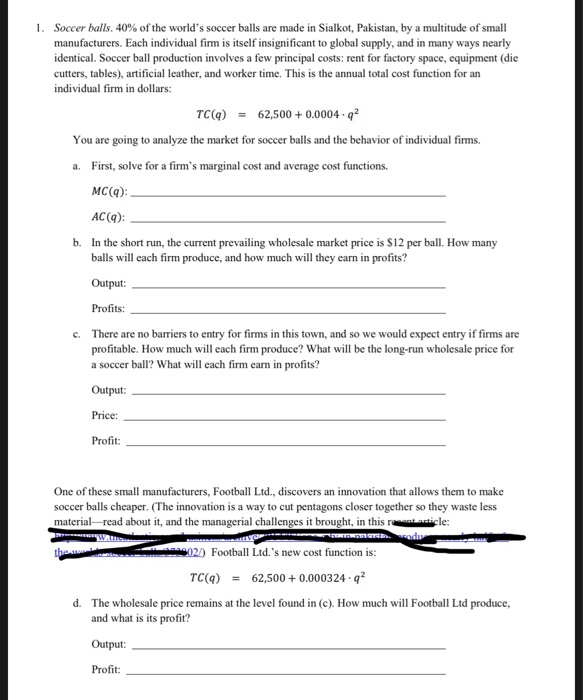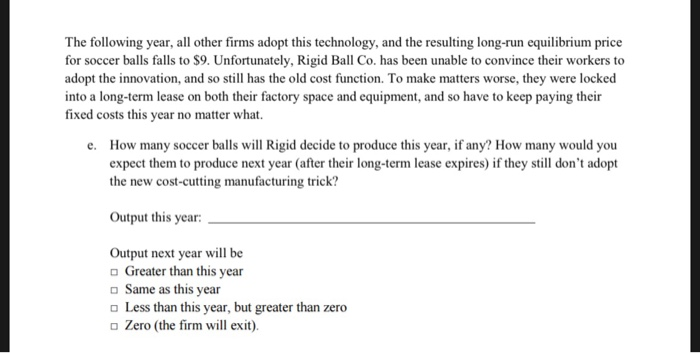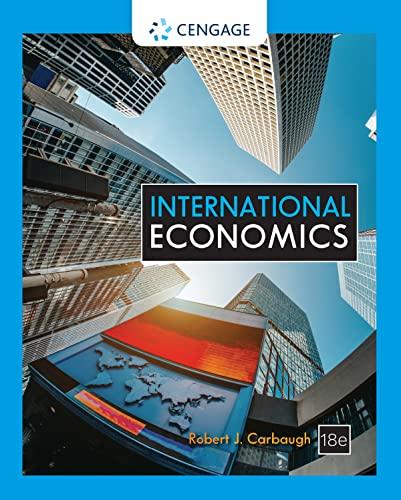Answered step by step
Verified Expert Solution
Question
1 Approved Answer
1. Soccer balls. 40% of the world's soccer balls are made in Sialkot, Pakistan, by a multitude of small manufacturers. Each individual firm is


1. Soccer balls. 40% of the world's soccer balls are made in Sialkot, Pakistan, by a multitude of small manufacturers. Each individual firm is itself insignificant to global supply, and in many ways nearly identical. Soccer ball production involves a few principal costs: rent for factory space, equipment (die cutters, tables), artificial leather, and worker time. This is the annual total cost function for an individual firm in dollars: TC(q) = 62,500+ 0.0004.q You are going to analyze the market for soccer balls and the behavior of individual firms. a. First, solve for a firm's marginal cost and average cost functions. MC(q): AC(q): b. In the short run, the current prevailing wholesale market price is $12 per ball. How many balls will each firm produce, and how much will they earn in profits? Output: Profits: c. There are no barriers to entry for firms in this town, and so we would expect entry if firms are profitable. How much will each firm produce? What will be the long-run wholesale price for a soccer ball? What will each firm earn in profits? Output: Price: Profit: One of these small manufacturers, Football Ltd., discovers an innovation that allows them to make soccer balls cheaper. (The innovation is a way to cut pentagons closer together so they waste less material-read about it, and the managerial challenges it brought, in this recent article: the 02/) Football Ltd.'s new cost function is: TC(q) = 62,500+ 0.000324-q d. The wholesale price remains at the level found in (c). How much will Football Ltd produce, and what is its profit? Output: Profit: The following year, all other firms adopt this technology, and the resulting long-run equilibrium price for soccer balls falls to $9. Unfortunately, Rigid Ball Co. has been unable to convince their workers to adopt the innovation, and so still has the old cost function. To make matters worse, they were locked into a long-term lease on both their factory space and equipment, and so have to keep paying their fixed costs this year no matter what. e. How many soccer balls will Rigid decide to produce this year, if any? How many would you expect them to produce next year (after their long-term lease expires) if they still don't adopt the new cost-cutting manufacturing trick? Output this year: Output next year will be Greater than this year Same as this year Less than this year, but greater than zero Zero (the firm will exit).
Step by Step Solution
There are 3 Steps involved in it
Step: 1
ANSWER a To find the marginal cost MC and average cost AC functions we differentiate the total cost TC function with respect to quantity q TCq 62500 0...
Get Instant Access to Expert-Tailored Solutions
See step-by-step solutions with expert insights and AI powered tools for academic success
Step: 2

Step: 3

Ace Your Homework with AI
Get the answers you need in no time with our AI-driven, step-by-step assistance
Get Started


